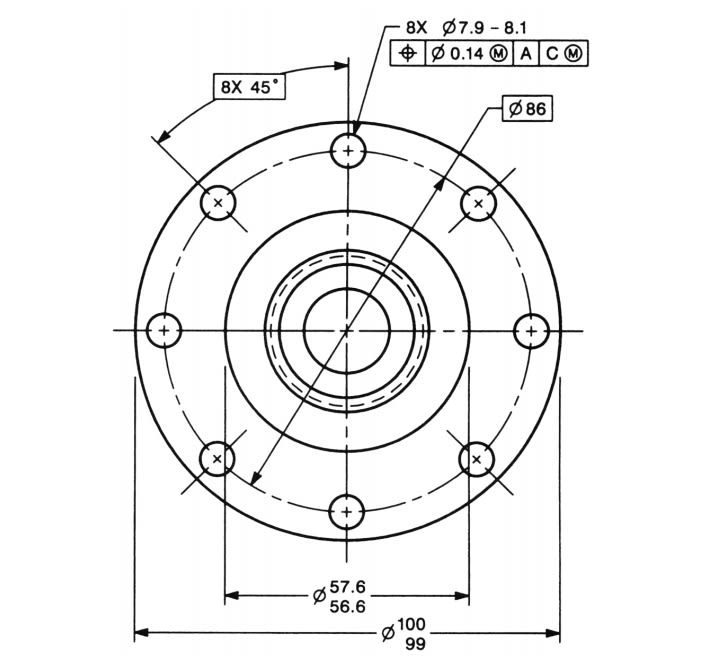looslib
Mechanical
- Jul 9, 2001
- 4,205
We have a drawing that has a bolt circle with 4 holes on it. The holes are basic angles as is the bolt circle diameter.
The wholes are at the 45 position, so we have 1 dimension of 45 to the first hole off the axis of the part in the drawing.
My questions is, what dimensioning do we use for the other 3 holes with a basic angle: 3X 90 or 4X 90?
I looked in ASME Y14.5-2018, but only shows angular dimensions that are on an axis.
"Wildfires are dangerous, hard to control, and economically catastrophic."
Ben Loosli
The wholes are at the 45 position, so we have 1 dimension of 45 to the first hole off the axis of the part in the drawing.
My questions is, what dimensioning do we use for the other 3 holes with a basic angle: 3X 90 or 4X 90?
I looked in ASME Y14.5-2018, but only shows angular dimensions that are on an axis.
"Wildfires are dangerous, hard to control, and economically catastrophic."
Ben Loosli

